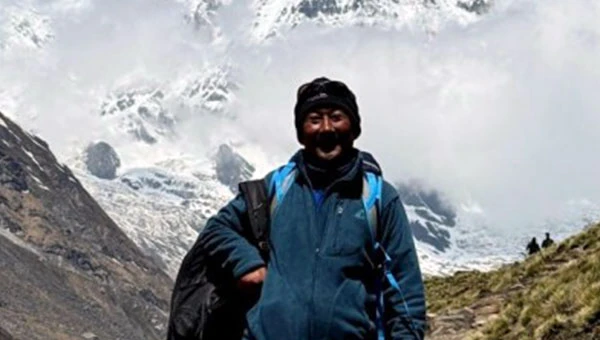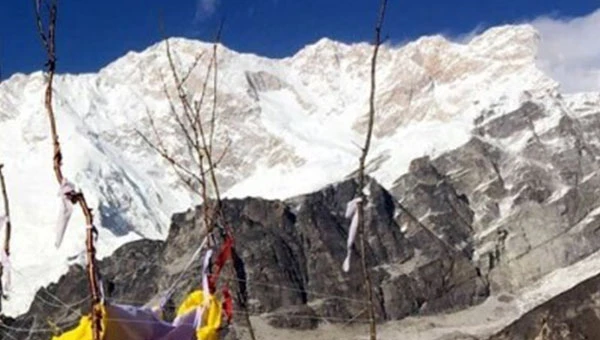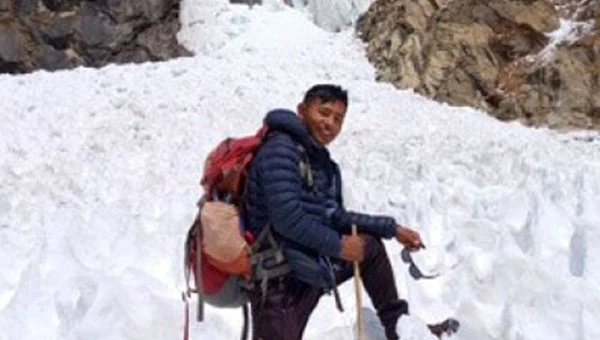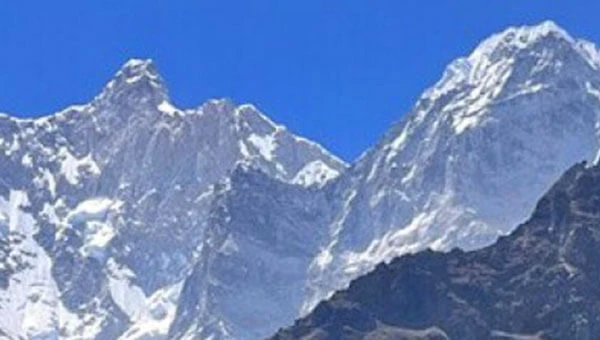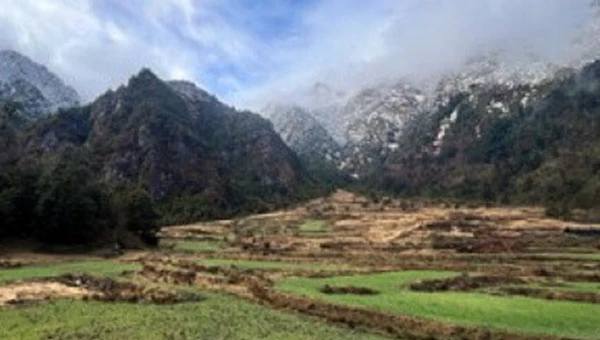Phakding Village
Phakding is a small Sherpa village in the Khumbu region of Nepal, lying by an important tributary of the Dudh Kosi River. Located over about 2600 metres or 8534 feet above sea level, it is where trekkers rest during their journey towards the Base Camp of Mount Everest. It is an ideal village setting where the environment and scenery involve lots of green vegetation and elevated mountains. The place known as Phakding is also one of the most beautiful areas, being very close to the mountains, and is more or less perfect for resting and getting used to the climate.
It is located within the Sagarmatha National Park, another UNESCO World Heritage site famous for its botanical and zoological richness. On the way to Phakding are luxurious guest houses, several monasteries, a small school, and numerous colourful mani walls. In a sharp display of versatility, the villagers, the Sherpas, who are world-renowned mountaineers, continue to enrich the cultural fabric of the village. Tourists are immersed in the Sherpas to get to know the ethnic group's culture and history of the destination.
One cannot help but wonder what the fate of Phakding is today, since it lies at the centre of the area frequented by trekkers during the trekking season. It is relatively well-endowed in terms of infrastructure, with teahouses that start from the bare minimum. Then lodges that offer medium to high-level services to international climbers. The village meets the basic needs of tourists, offering food and equipment for rent and employing guides to accompany travellers and make arrangements for future travel. The distance from Lukla to Phakding is not as steep, and the walk only takes about 3 to 4 hours. This makes it easier for trekkers before they begin to attempt the more demanding journeys to higher ground.
Apart from its geographical significance as a stopover point for trekkers, Phakding has several other attractions and activities to offer. The trekkers can spend valuable time visiting a few monasteries. Trek short and steep tours to a few viewpoints, or just relax in the extensive, serene environment. It also erodes direct contact with the local community, for visitors to learn more about the Sherpa people and culture. In conclusion, one may be inclined to classify Phakding as a mere transit point on the journey to Everest. However, Phakding is much more than just that. It is an embodiment of the Khumbu region, awash with natural beauty and culturally imbued through and through.
Why go to Phakding Village?
There is cultural and significant value to travelling to Phakding for travellers, and it is also convenient for people who intend to trek. At a lower altitude than the starting point of the three main treks, Namche Bazaar is essentially the gateway to the Khumbu region. With settlements like Phakding on the way to Lukla airport. With Lukla to Phakding, the path is somewhat less steep, and the distance between settlements is smaller. Meaning that acclimatisation is easier and the chance of getting sick at high altitudes is minimal. Geographically, the site chosen is at the bank of the Dudh Kosi River, surrounded by forests and snowcap mountains.
However, aside from delivering pragmatic value, Phakding serves as the entry point to the exploration of the cultural and religious sites of the Khumbu area. Several monasteries and mani walls are located in the village, making the place significant as the core Buddhist values are reflected in the Sherpa people. They also get to be around the Sherpas, skilled climbers whose lives revolve around climbing and mountaineering. The cultural aspect complements the trekking adventure because social programs include visiting monasteries, watching the traditional ceremonies, and, more importantly, interacting with friendly local people who are so welcoming. Hence, when people visit Phakding, it is not only that they get to warm up for what is expected, but also the calmness of the environment and the monuments found there are worth attention.
What are the Major Highlights of the Phakding Village?
Trekking up through the Dudh Kosi Valley, Phakding Village is found in the Khumbu region of Nepal, and it has many attractions to offer to the trekkers, which include the following: That is one of the great attractions because Large parts of the country are mountainous, and Nash has stunning natural scenery. This point is a variety of shades of green, where the village is located right on the bank of the Dudh Kosi River. Surrounded by forests and the great Himalayas mountains. The conditions remain determinant of ease in the region and offer picturesque views. The trekkers can see without the challenges of the tough routes. Various short treks around Phakding can be made for an inspiring view of the mountains, which turns the place into heaven for photographers.
Regarding cultural aspects, Phakding holds Buddhism as the primary religion, evident from the presence of monasteries and the mani walls. It has Rimishung Monastery, a religious destination for the Sherpa people in the region. Tourists can walk around the monastery and look at the Buddhist ceremonies, and the beautiful architecture of the building is also a sight to behold for lovers of sacred art and sculptures. The so-called mani walls that are filled with prayers inscribed into the walls are also the true picture of local spirituality. Incredibly, the mentioned cultural points of interest deliver the feeling of being rooted in this area and studying its history. As well as providing tourists with the chance to see the spirituality of a village.
Though Phakding is just an entry point to the region, there are many things to enjoy here, such as the warm reception from the local Sherpa people. They are well known for their hospitality, and apart from the physical assistance that the trekkers undoubtedly take from them. Trekkers can be treated to warm-hearted welcomes from the Sherpas. Visitors can be accommodated in various guesthouse accommodations. From simple traditional tea houses to standard lodges. Interacting with the people, getting to know their traditions, and exchanging life stories creates a human attitude and a colourful contribution to the trekking experience. For these reasons, Phakding can be considered an especially noteworthy stop on the way to the Everest Base Camp. It is charming by its nature, steeped in cultural history, and universally welcoming.
How do I get to Phakding Village?
Reaching Phakding Village usually involves using an aeroplane, followed by hiking on foot.
Flight to Lukla: The easiest and most effective means of initiating the trek towards the base at Phakding is to take a domestic Nepalese Airlines flight from Kathmandu. The capital city of Nepal, to Tenzing Hillary Airport in Lukla. This flight takes less than 0. 5 hours to 1 hour and provides beautiful views of the Himalayas. The geographical challenges and the very short and steep Tenzing-Hillary Airport at Lukla make this journey exciting as well.
Trek from Lukla to Phakding: When reaching Lukla, the first day of the trek is the Phakding day. Lukla to Phakding is about 8 kilometres, and the trek can usually take around 3-4 hours. The trail ascends through the Dudh Kosi River and offers stunning views of the villages. Dense forests and suspended bridges are vibrantly coloured with prayer flags. There is a trail that leads to it, and this is used by many trekkers; hence, it is relatively easy to trek up to the volcano.
Alternative Route (Helicopter or Trekking from Jiri): For those people who might be interested in routes other than the standard one or those who would wish to spend more time, there are other routes to Phakding. Another solution is to fly from Kathmandu to Lukla by helicopter. Though it is much more expensive and can be more comfortable, the view while flying is much better. Another route that starts from Jiri for buses or jeeps that can be hired in Kathmandu. This trekking path, which is also referred to as the Pioneers' Path, is the one that was trodden by the pioneer Everest expeditions. It is longer than the new Classic path, providing the trekkers with wonderful opportunities to see a great variety of landscapes. As well as many remote Sherpa villages, before arriving at Lukla, where the trekkers then spent a night in Phakding.
Please check out the Helicopter Tour to Everest for more info.
Culture and History of Phakding Village
The Phakding Village is located in the Khumbu area in Nepal and is endowed with a vibrant and cultural history from the Sherpas. Historical evidence revealed that the Sherpas, the inhabitants of the eastern Tibetan land, shifted to the Himalayas more than five hundred years ago. These people soon introduced the Buddhist culture, which still prevails and is very important in the Phakding area. As a predominantly Buddhist place, monasteries, chortens, mani walls, prayers, and religious texts are commonly observed when trekking around the villages.
Among others, one of the most noted cultural points of interest in Phakding is the Rimishung Monastery. For the inhabitants of this monastic complex, it is a spiritual sanctuary for the Sherpas: monks conduct services, prayers, and ceremonies on weekdays. The followers of these customs are cloistered in the monasteries, and thus, tourists get the opportunity to observe these practices and the monastic lifestyle. The monastery's existence makes it evident that Buddhism plays a significant role in the area to ensure that trekkers and climbers get the necessary peace and order while facing different difficult routes.
The history of Phakding village is directly associated with the evolution of treks and climbs in Mount Everest. Being an initial part of trekkers' journey towards the Everest Base Camp, Phakding has always been part of the flow of trekkers and climbers since the beginning of the twentieth century. More particularly after the first successful ascent of Everest in 1953 by Sir Edmund Hillary and Tenzing Norgay. This has, in return, triggered economic growth in the village and has led to the opening of a number of lodges, teahouses, and trekking services. However, it is ironic to note that in the course of the aforementioned transformations. The conventional character of the village has remained intact, and the cultural crucible of the community has not been contaminated.
The inhabitants of Phakding, who are the Sherpa, are hospitable, hardworking, and possess immense knowledge of Mountaineering. Interacting with the Sherpa's foliage, the trekkers with the gateways to the real Sherpas and an insight into their way of life, their culture, and how best they can survive and thrive at high altitudes. Contemporary Sherpa customs indeed exist, and their periodic festivities, like Mani Rimdu, comprise theatre dancing, singing, and religious ceremonies. These cultural activities highlight the visitor's various activities that have been practised and are invaluable in the 19th-century Phakding Village.
Phakding to Namche Bazaar Distance and Route
The second day of the journey to Everest Base Camp in Nepal involves travelling from Phakding to Namche Bazaar, which involves covering approximately 10 kilometres (6.2 miles). This is the picturesque part of the trekking trails, but it is also the part where the altitude rises, hence making it difficult, though enjoyable.
Distance and Duration
The trek from Phakding to Namche Bazaar takes 10-11 hours of walking. But It may take slightly longer if the trekkers must make frequent breaks due to altitude sickness. It is not just a smooth track; it is combined with features like steep climbs and gradual up movements that take one from 2,610 metres,2636 feet in Phakding, to 3,440 metres, 11,286 feet in Namche Bazaar.
Route Description
1. Phakding to Monjo:
The first three days of the Himalayan trek start from Phakding. Which is comparatively easier and passes through the sides of the Dudh Kosi River, crosses through forests of pine trees, and several small settlements of Tok Tok and Benkar, after about 1. Normally, it takes 5 to 2 hours to reach Monjo, the village where entry to the Sagarmatha National Park is made. Here, the trekkers have to lock their permits, and in between, they can relax for some time.
2. Monjo to Jorsalle:
The trek then continues to Jorsalle, the last human settlement before heading to Namche Bazaar. This part of the trek may also be relatively easy, as the trail involves crossing several streams and suspension bridges over the Dudh Kosi River and offering spectacular views of the forests of rhododendron and magnolia. Jorsalle is another good spot for a food break and a brief rest before the tough phase of the trek.
3. Jorsalle to Namche Bazaar:
After crossing Jorsalle, the trail continues parallel to the river and steeply to the Hillary Suspension Bridge, the highest and longest suspension bridge during the trek on this route. Once across the bridge, the trail quickens its grade and emerges into dense pine woods. It is most likely to be a tough full-day trek since there are many switchbacks and a steep rise in altitude. But it is well worth the climb since one receives spectacular views of the Virgin Peaks, including Mount Everest and Lhotse, if the day is bright enough.
Arrival at Namche Bazaar
Namche Bazaar is a flowing and alive village situated in an open circular disc-like valley, which could be termed an amphitheatre. Namche is the largest village in the entire region of Khumbu. It is also important as a trading centre and a place where climbers can take a break to acclimatise to the higher altitude. The services range from accommodation facilities, such as lodges, to other commercial facilities, such as restaurants, shops, and internet cafes. An extra day is generally spent in Namche for proper physical conditioning and visiting nearby sights. Including the Everest View Hotel, the Sherpa Culture Museum, and the monasteries.
The trek from Phakding to Namche Bazaar combines exciting sights of nature, interaction with colourful local people and their culture, and a test of endurance, as the higher altitude treks do on the fateful journey to Everest Base Camp.

